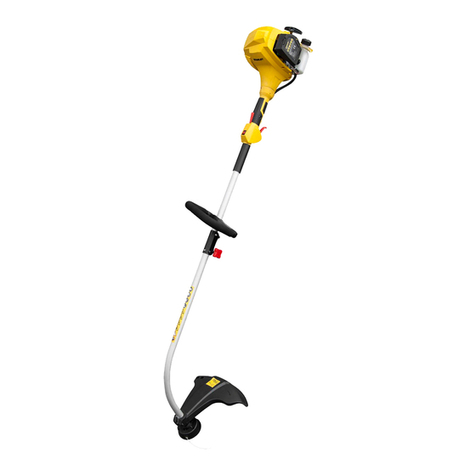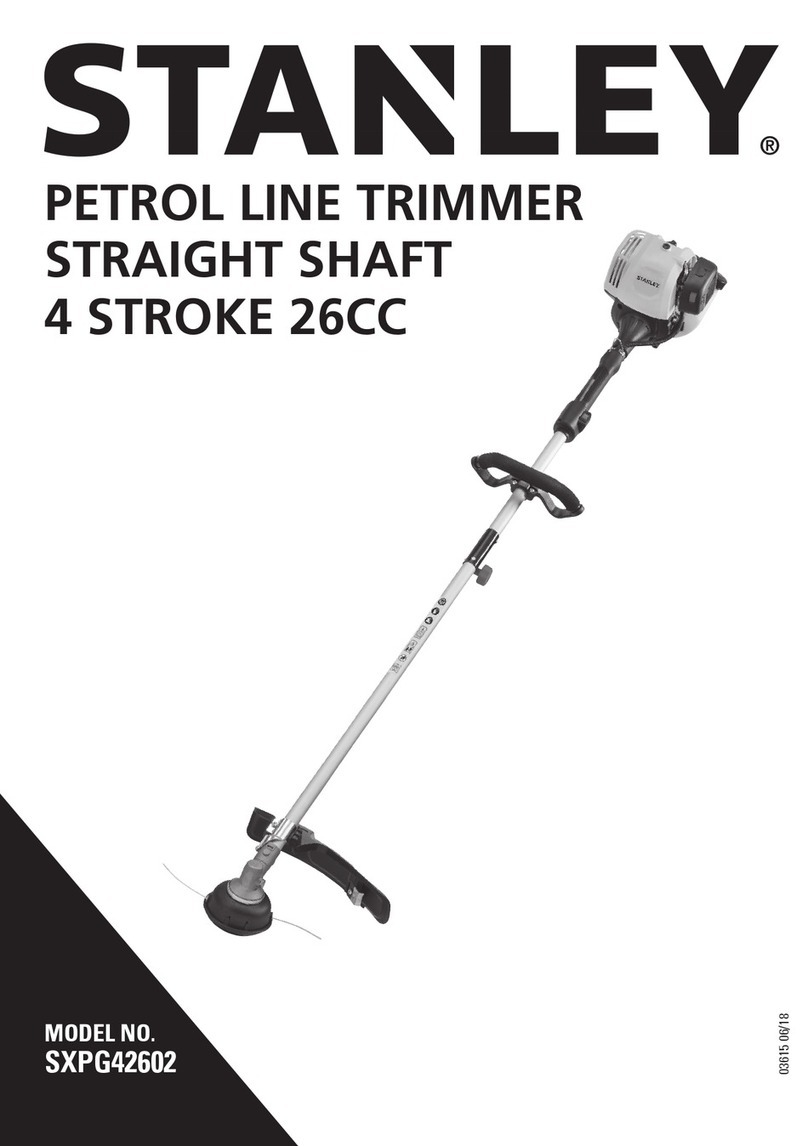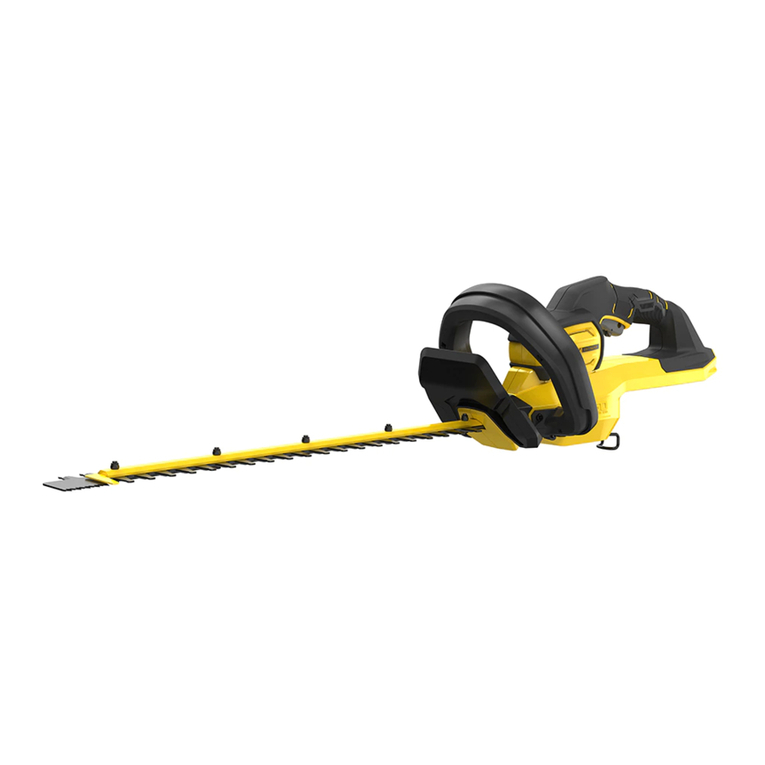3
. Retrofitting or making any unauthorised
changes to the appliance, as well as the use of
unapproved parts are prohibited.
Handling petrol-driven appliances
.Protect the appliance against hard blows! Do
not drop the appliance! If the appliance was
exposed to hard blows, make sure immediately
that no fuel is leaking (risk of fire and explosion!).
.Danger of toxicity caused by exhaust fumes!
Starting the motor and using the appliance inside
closed rooms is prohibited.
.Check the fuel system regularly for leaks or
defective parts.
.Always switch off the motor when transporting,
filling, cleaning, or maintenance.
Use/workplace
.The appliance may not be used unless it is
undamaged and functions properly.
If the appliance or parts of it have become
defective, have it repaired by a specialised
technician.
. Always obey the current national and
international safety, health, and working
regulations.
. Do not operate the appliance unless you did not
find any faults on checking.
If a part has become defective, make sure to
replace it before you use the appliance again.
.Ensure that the working area is clean and tidy
when working with the appliance.
.Ensure that there is sufficient light when
working with the appliance.
.The environment must be free of easily
flammable and explosive materials.
.Always use the necessary personal safety
equipment.
Table of contents
1. General safety instructions
2. Symbols
3. Intended use
4. Instructions specific to the appliance
5. Your appliance at a glance
6. Unwrapping and commissioning
7. Operation
8. Cleaning and maintenance
9. Storing, transport
10. Disposal
11. Technical data
12. Malfunctions and troubleshooting
1. For your safety
General safety instructions
.To operate this appliance safely, the user must
have read and understood these instructions for
use before using the appliance for the first time.
. Observe all safety instructions! Failure to do
so may cause harm to you and others as well as
serious injuries.
. Young adults under 18 as well as users who are
not sufficiently familiar with its operation may
not operate this appliance.
. Retain all instructions for use, and safety
instructions for the future.
. Keep children away from the appliance! Children
are unable to properly estimate the risks involved
in operating the appliance! Children tend to
behave in an unexpected manner!
Keep the appliance out of the way of children
and other unauthorised persons.
. Always ensure that an appliance which has been
switched off cannot be restarted unintentionally.
. All parts of the appliance, especially safety
devices, must be properly installed to ensure
proper operation.
G
B






































